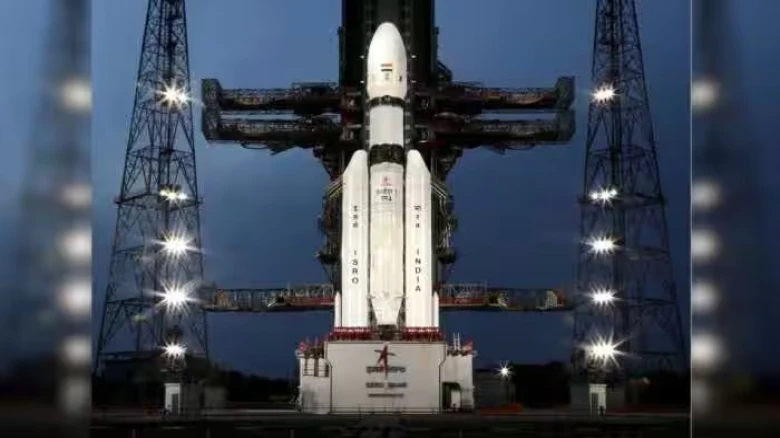International

Chandrayaan 3 will essentially attempt to accomplish what its predecessor failed to do in 2019.
Digital Desk: The third edition of Chandrayaan, an Indian moon research mission, will launch at around 2.30 pm on July 14 from the Indian Space Research Organisation (ISRO).
This mission, Chandrayaan-3, is a follow-up to the 2019 launch of Chandrayaan-2, which, despite delivering insightful data and information about the Moon, fell short of its primary goal of landing on the surface.
It's vital to keep in mind that the Chandrayaan-1 mission, which took place in 2008, was incredibly successful and provided proof of water molecules on the Moon.
Chandrayaan 3 will essentially attempt to accomplish what its predecessor failed to do in 2019. The mission will use a lander and rover that have been modified with payloads to land on the moon and carry out numerous experiments.
Launch Vehicle Mark-III or LVM3, a three-stage medium-lift rocket developed by ISRO, will carry the lander and the rover into orbit. It will launch from Andhra Pradesh's SDSC SHAR in Sriharikota.
Also Read : Supreme Court to hear Manish Sisodia's bail appeal tomorrow
This mission occurs at a time when ISRO, by the recently released Indian Space Policy, seeks to shift from its position of manufacturing operational space systems to focus on R&D, prove innovative systems of space objects, and so forth.
How it may land
At the top of the LVM-3 rocket, in the C25 upper stage, is where the Chandrayaan-3 spacecraft is located.
What LVM-3 is made of and a peek at the location of Chandrayaan 3's resting place | ISRO
The Chandrayaan spacecraft will separate from LVM-3's C25 upper stage when the rocket launches from Sriharikota and reaches a particular orbit above the Earth. At that point, it will begin its journey towards the Moon.
The spacecraft is outfitted with a propulsion system that will propel it to an orbit that is up to 100 km above the surface of the moon.
The lander and rover will then detach from the propulsion system and attempt a soft landing on the moon's surface.
A look at the lander and rover
First, the lander will be able to soft-land at a predetermined location on the moon, and then the rover, which will conduct chemical analyses of the lunar surface, will be launched.
Altimeters, velocimeters, an inertial measurement package, a propulsion system, navigation and guidance control, a danger detection and avoidance system, and a landing leg mechanism are among the technologies the lander is equipped with.
the Moon?
In 2019, as the Chandryaan-2 mission approached, ISRO gave a detailed justification for why the nation desires to go to the Moon, stating that
· The Moon "provides the best linkage to Earth's early history." It provides a historical record of the inner Solar System's environment that hasn't been altered.
· Further research was needed to determine the extent of the distribution of water molecules on the surface, the body added, citing Chandrayaan-1's discovery of water molecules.
· It went on to say that there "might be a possibility of the presence of water in permanently shadowed areas around the Lunar South Pole."
· Both Chandrayaan 2 and Chandrayaan 3 are expected to travel to the lunar south pole. Chandrayaan 2's rovers attempted to do so.
Leave A Comment